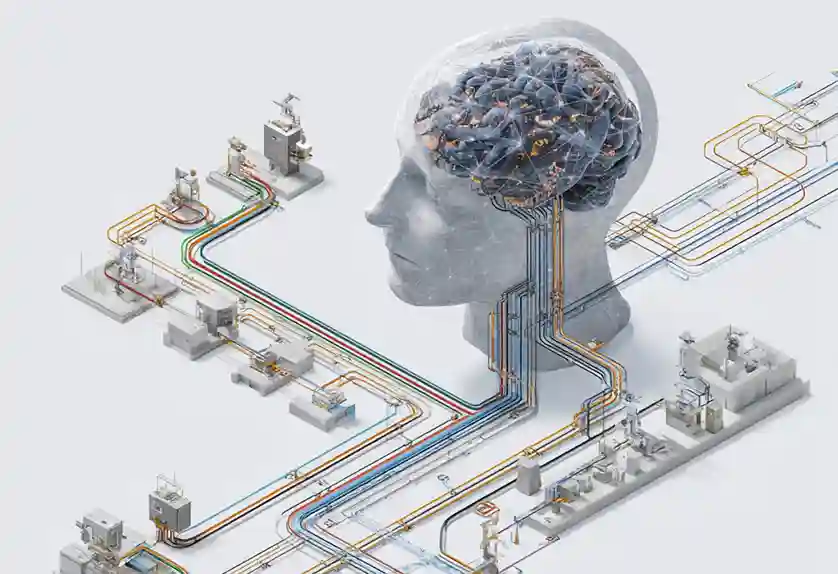DevOps and traditional IT operations can benefit from ChatOps processes, as automation, collaboration, and visibility improve overall efficiency. A higher level of collaboration often results in faster development.
According to Gartner, 75% of all DevOps projects are unlikely to succeed because they do not address organizational learning and change. As George Spafford, Senior Director Analyst at Gartner explains, “People-related factors tend to be the greatest challenges--not technology.”
ChatOps represents a focus on the process and tools that facilitate information sharing and collaboration. Collaboration is an essential element in every application development process.
In this article, you’ll learn about the role of ChatOps and why it's essential.
What Is ChatOps?
ChatOps is a collaborative process that integrates DevOps tools, processes, and technologies to enable transparency and workflow automation to strengthen communication channels within an organization for better transparency and workflow automation. Essentially, ChatOps creates a collaborative environment that connects people, processes, and tools to automate workflows, resulting in greater efficiency, especially in an agile or distributed team.
GitHub coined the term ChatOps in reference to the integration of a chatbot called Hubot in their internal DevOps framework. Since then, numerous organizations have embraced it as an additional DevOps enabler.
The fundamental goal of ChatOps is to facilitate effective communication. DevOps teams can configure chatbots to deliver notifications on code deployments, application status, event logs, security alerts, and more. In the same vein, team members can automate workflows and collaborate faster by integrating tools--plugins and scripts -- into their conversations, resulting in increased productivity. Slack is another popular ChatOps tool.
The Role of ChatOps In DevOps Collaboration
Organization silos pose a significant challenge to application development. Insufficient communication between teams can cause problems. For instance, Dev and Ops may not quickly become aware of downtime in production or breaking changes during the development phase.
While collaboration and task management tools are readily available, improving cross-department workflows using manual methods is not enough to prevent information silos from growing. That means teams have to face slow productivity, be unaware of the latest product updates, lose time and money. For instance, a research team should have a quick way to automatically notify the development teams of any duplication or error, and enable transparency and awareness.
ChatOps takes productivity one step further by implementing integrations, analytics, customizations, and AI within chat rooms, enabling faster information distribution across departments. As remote work becomes more prevalent, the value of ChatOps will increase even further.
Some of the roles that ChatOps can take include:
- Enabling development teams to deploy code within chat interfaces
- Notifying teams of operation issues such as downtime, new logins, or product updates
- Quickly notify teams of important domain-specific fixes and upgrades within chat channels
- Facilitating a centralized knowledge base that allows authorized users access to information
- Execute commands to perform specific actions
Read More: When DevOps Falls Short: DevOps and Content Management Processes
Core Elements of ChatOps
ChatOps comprises three primary elements: Chat Apps, Chatbots, and Integrations.
Chat Apps
In a ChatOps model, communications channels or chat applications are the first components. Chat apps are essentially groups of chat tools that integrate with a chatbot for communication.
Slack, HipChat, and Microsoft Teams are a few of the popular instant messaging applications for team collaboration for you to get started with ChatOps right away. These tools offer similar features and offer you the flexibility to integrate third-party extensions that you can tailor to meet your needs.
Chatbots
Chatbots represent a crucial part of ChatOps. It connects the chat applications with third-party integrations and operational tools. You can set up these chatbots to send or receive messages and alerts through the chat application. They facilitate human-to-human, human-to-machine, and machine-to-machine communications.
You can build custom scripts and configure your chat application channels to execute commands sent as messages within a chatroom on an operational tool. On top of that, you can use these commands to deploy code to servers, monitor infrastructure resources, or generate incident reports and notifications.
Integration & Extensions
Operational tools are typically part of an organization’s tech stack and workflows. They consist of tools that assist with continuous integration, continuous delivery, version control, incident management, continuous monitoring, analytics, and reports. Examples of these tools include products from Atlassian such as Trello, Jira, Confluence, along with other tools such from GitHub and Ansible. These tools provide domain-specific knowledge of organizational processes.
Benefits of Implementing ChatOps In Your Organization
Automation
Like all other agile processes, automation is crucial to ChatOps. Rather than having every crew member store their own guide script, it is possible to store and organize this data in a centralized and well-documented platform. You can configure the chatbot to execute tasks in real-time, generate reports, and replace the CLI to keep everyone up-to-date at all times.
With the automation that ChatOps provides, you can eliminate error-prone manual execution of code and track progress with chatbots. In this way, you avoid the inconvenience and time-wasting that repetitive tasks cause, which is crucial for effective teamwork and collaboration.
Transparency & Visibility
ChatOps enables organizations to eliminate silos within teams, champion a better DevOps culture, and promote visibility and transparency. You can set up channels for teams to visualize necessary information and updates on the application. In addition to that, you can set up authorization rules for users within the application so only authorized users have access to specific information or channels.
Similarly, your team can rapidly address incident errors before it affects user experience through incident reports on the chat channels. ChatOps helps you align with application development progress and situation. For instance, when a particular feature fails to run -- or runs on one system but not the others -- during the build, you can identify the issues and work together to fix them.
Team Engagement
Imagine when everyone on your team is on the same page, it becomes easier to build and deploy applications. ChatOps is a collaborative approach driven by information that helps to eliminate the bottleneck and delays in getting access to the correct data for a great outcome.
During the development cycle, teams feel empowered since they remain up to date on viable issues. Similarly, they can rely on bots to provide relevant information and analytics on an application's performance, making it easier and faster to iterate and improve the application. With more data comes better-informed decisions. Teams in different departments of the organization can make more informed decisions and leverage the tools and processes that ChatOps provide to facilitate efficient communication.
Productivity
Another crucial benefit of adopting ChatOps within your DevOps team is its impact on productivity. By helping to simplify and enhance collaboration, users can get contextual data in real-time, helping to make better-informed analyses and decisions. It will be difficult for teams to work efficiently without silos between teams -- especially with the rise in remote work.
As such, it is a culmination of every benefit of ChatOps. With more automation and transparency, you can rapidly resolve issues within your application, save development time and resources, and have more time to innovate and develop new solutions.
Read More: Everything You Need to Know About Content Silos
Extending ChatOps To DevContentOps
ChatOps helps to align the people, tools, and processes necessary to deliver faster development. Developing an agile application requires continuous improvement in every area. As the ChatOps approach matures, organizations are finding creative ways to facilitate better collaboration and eliminate silos. Traditional collaboration between DevOps teams and content teams can be challenging because their processes and tools differ. For content-enabled applications (websites, mobile apps, and other digital experiences), ChatOps can thus be extended to include the CMS tools and processes for even better enterprise collaboration.
The DevContentOps approach aims to bridge the gap between content authors, developers, and operations. That way, content creators and developers can bridge information gaps, leverage a more robust ChatOps implementation, reduce delays in delivering code and content, and drive better and more engaging digital experiences to their audience.

 Alexander Fashakin
Alexander Fashakin




